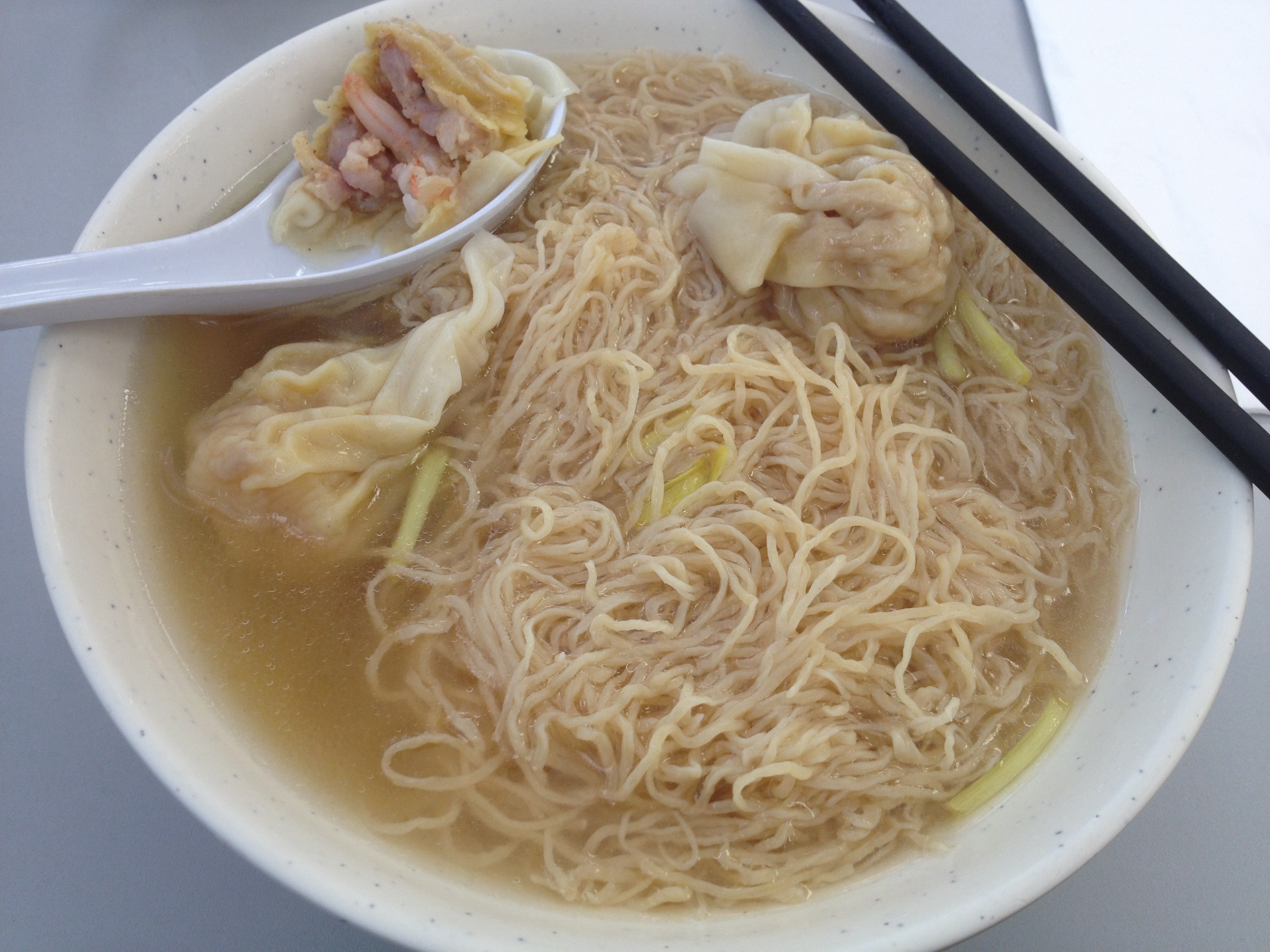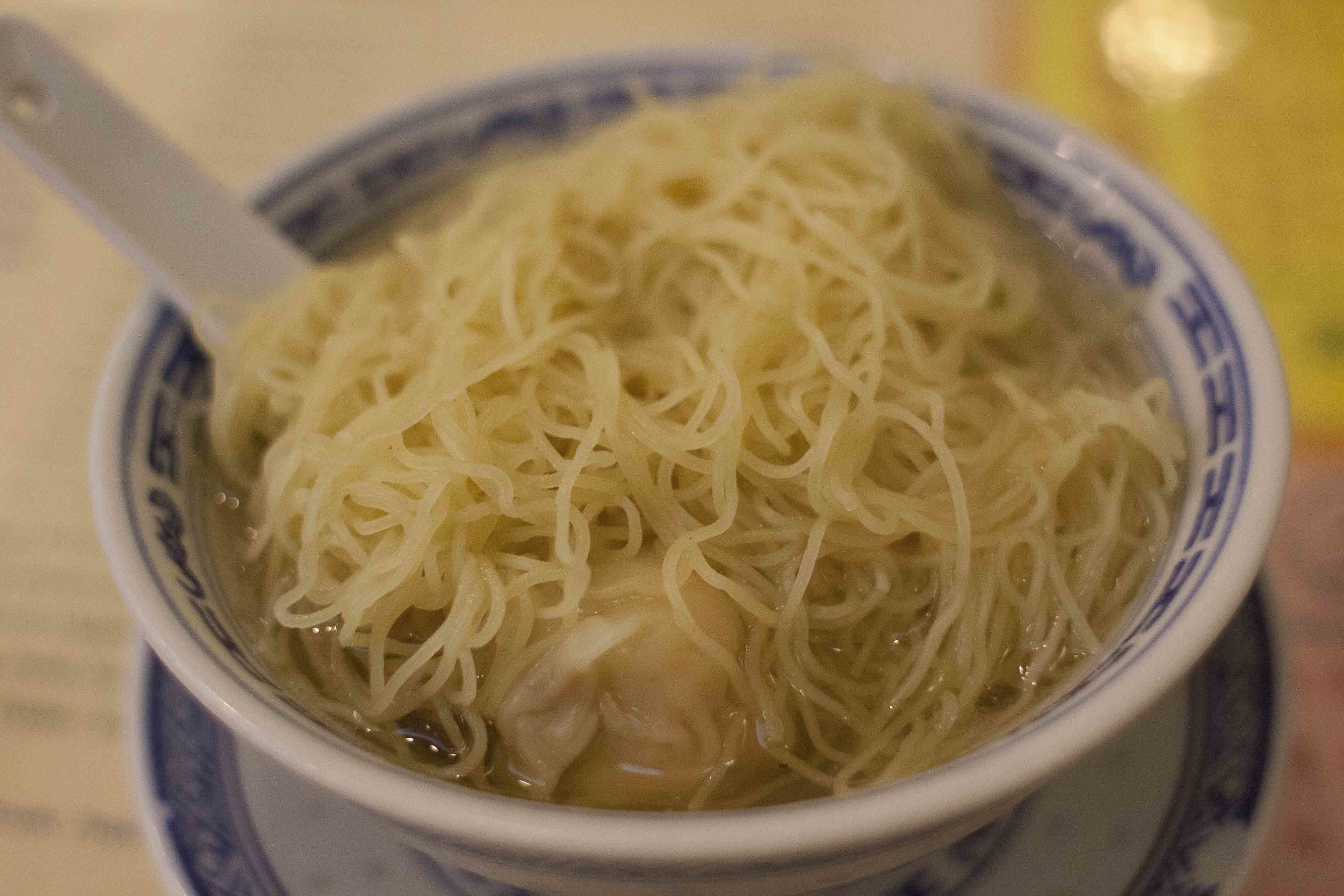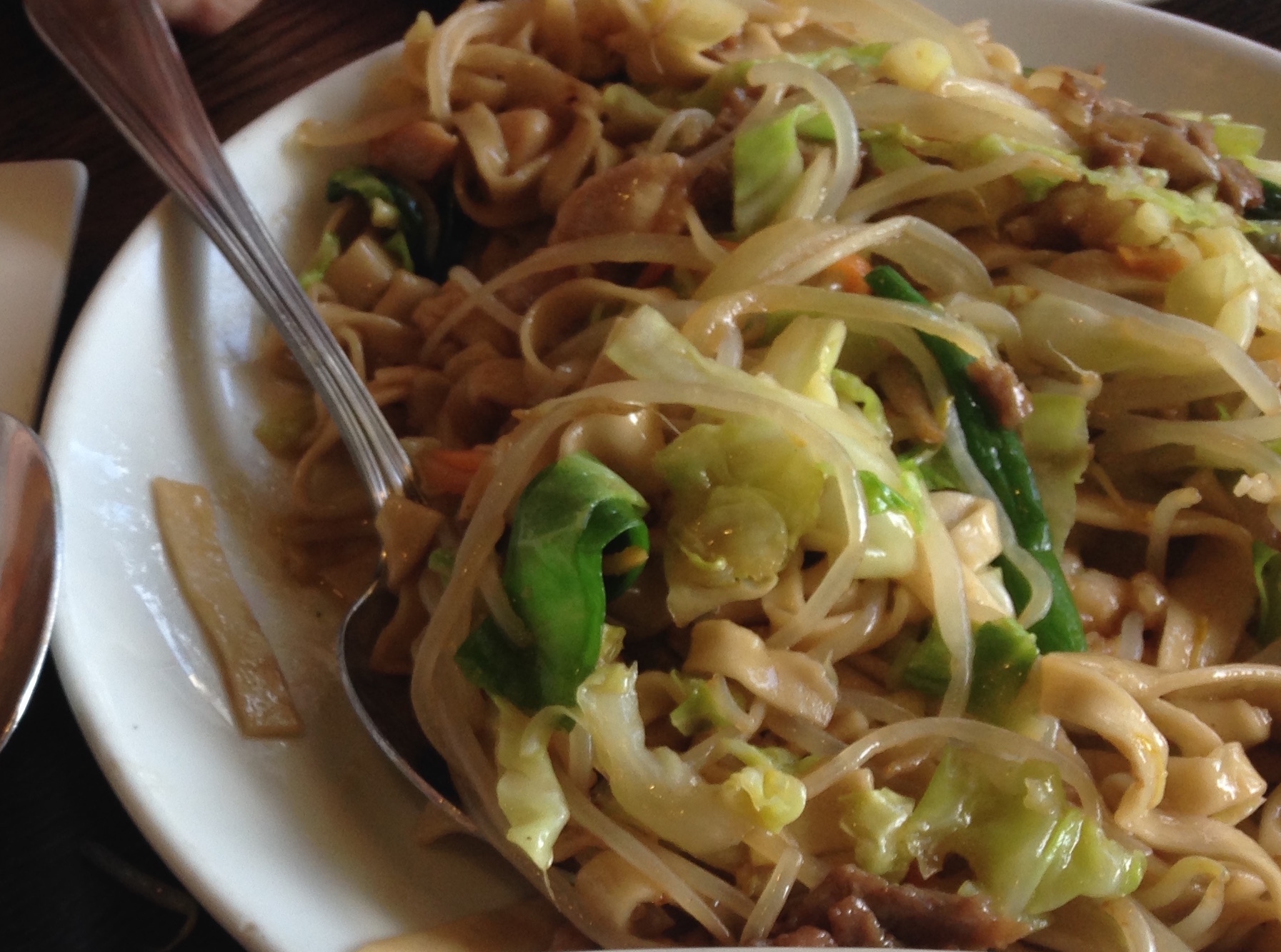As a companion to a discussion of hand-pulled and hand-stretched noodles, let’s talk about other Chinese wheat noodles made in-house without machines. In some of these types of noodles, rolling pins flatten out the dough to a uniform height, and knives cut individual noodles. In other noodles, scissors, knives, or special tools chop off noodles straight off a mound of kneaded dough. These noodles contrast with hand-pulled and stretched noodles, which the hands themselves stretch mid-air to the desired size.
Where do you like to eat these types of noodles, where else can they be found, and which noodle-types and preparation are your favorites? I’m also hoping the entire Hungry Onion community can guide us about noodle-theory (see also a Home Cooking thread).
Except for jook sing noodles, which contain both egg and and possibly an alkali substance to make them hard and springy, my impression of the noodles listed here are that they are soft and chewy and they stick to your teeth. These noodles mostly contain just flour and water. This makes them very different from most Italian pastas, which get an al dente texture either with hard semolina wheat or eggs.
Search here on Hungry Onion or Chowhound for other opinions of linked restaurants and their noodles. Restaurants are in SF unless otherwise noted and y*lp links are provided for addresses, hours, and photographs.
7: Shou gan mian 手赶面 Hand cut / knife cut AKA shou da mian 手打面 hand made noodles AKA shou gan mian 手擀面 Hand rolled (as in rolling pin) noodles AKA shou gong mian 手工面 Handmade noodles AKA shougan cu/xi mian 手擀粗面 / 手擀細面 Hand rolled wide/thin noodles AKA Shou Han mian 手撖麵 Hand rolls
Restaurants (soup, dry/sauced, stir-fried) : Shan Dong Restaurant (Oakland), Beijing Restaurant, Nutrition Restaurant (Cupertino), Chino, The Noodle Shop (San Mateo), Ai Noodle (Cupertino), Ma’s Restaurant (San Jose), potentially others or some mis-classified as Shanghai style.
Shape : long strands, typically thick, irregular widths
Origin region : Northeastern
Ingredients : wheat flour, water
Technique : roll dough into a large rectangle, fold over, and cut into strips. There’s wide variation in what are served as hand or knife cut. Similar to Korean kalguksu.
Video : Shan Dong Restaurant 328 10th St Oakland - Hand cutting noodles
8: Shanghai cu chao mian 上海粗炒面 Shanghai thick noodles aka Shanghai flat noodles
Restaurants (stir-fried) : Shanghai House, China North Dumpling, & Sungari Dumpling House make them in-house. Many restaurants serve a “Shanghai noodle dish” dish, but many purchase noodles elsewhere, make them in-house with a machine (e.g., Tong Kee in Daly City), or use udon, a descendant noodle that is fatter. Shanghai thick noodles that seem identical to brand I’ve bought, are used in the wasabi noodles at North Beach Asian fusion restaurant The House.
Shape : long and thick, flattish rather than square, dimples along the length
Origin region : Shanghai
Ingredients : wheat flour, water, salt, oil
Technique : roll dough into a large rectangle, and cut into strips. For extra effect, one hand feeds a strip to the other hand, which leaves indentations as it flattens and tugs it, and then does a final waving motion for extra stretch. I’m not sure whether any local restaurants do that last step, in which case, other than shape, I’m not sure what distinguishes Shanghai noodles from generic knife cut.
Video : Hand made noodles, shanghai style fried noodles, soup noodles. 拉麵
9: Dao ba mian 刀拔面 Knife pulled/pushed noodles
Restaurants (soup, dry/sauced) : House of Xian Dumpling (see Souperman’s review).
Shape : long obliquely cut strands
Origin region : Shanxi
Ingredients : wheat flour, water
Technique : A special two-handed cleaver slices rolled out dough on an angle. Translated description.
Video : Chinese video 1 and 2.
10: Jook-sing noodles 竹昇麵 aka bamboo noodles
Restaurants (soup) : allegedly at King of Food Garden (formerly known as King Won Ton), but not made on site.
Shape : thin, long strands
Texture : good bite, springy
Origin region : Guangzhou, Guangdong
Ingredients : wheat flour, egg, alkaline?
Technique : the mixed dough is kneaded with a bamboo pole that’s controlled by a man riding it up and down. Sheeting and slicing into noodles may be done with a machine.
Video : Bamboo stick noodles and another video
Other : Richard Sun, owner of Tong Kee in Daly City, told me he would make jook sing noodles back when he owned five Bay Area restaurants. He said the noodles did not require alkaline (kansui) because the technique ensured a stable dough. Like most, if not all Cantonese places that make noodles in house, he currently use a machine to roll and cut their wheat noodles. The fresh egg noodles in the wonton soup use a high-gluten dough. He used to put kansui in the dough, but stopped using it because the noodles are made fresh every day and didn’t need kansui to preserve their texture. They also make fresh noodles for Hong Kong Style chow mein, and house made Shanghai noodles, which are thick and use all-purpose flour. If you know of Cantonese places that roll and/or cut their dough by hand, please let us know.
11: Daoxiaomian 刀削面 Knife shaved noodles aka hand cut aka hand made aka sliced noodles
Restaurants (stir-fried, soup) : Ancient Sichuan (El Cerrito) see also , Five Happiness, IPOT, Joy Restaurant (Foster City), MY China, Full House (Burlingame), Sichuan Fusion (Richmond), Boiling Beijing (San Bruno), Su Hong (Palo Alto), Shanghai House, Darda Seafood (Milpitas), Ma’s Restaurant (San Jose), BBQ Factory (Fremont), Wonderful (Millbrae), Xiang Xiang (Sunnyvale), and Taste Good Beijing Cuisine (Milpitas). Home cooks can buy a dried variety.
Texture : dense, stick to teeth
Shape : thick strips, irregular lengths, sometimes wavy on one side
Origin region : Shanxi
Ingredients: wheat flour, salt, water, rice flour or cornstarch?
Technique : with a special tool or knife , shave planks off the hard piece of dough directly into boiling water.
Video : Noodle Making - Knife-Shaved Chinese Noodles (dao xiao mian, 刀削麵) ; Chinese Street Food Adventures - Go Noodle Man Go; Making Noodles by Hand at Lanzhou La Mian - Shanghai, China
12: Jiandao mian 剪刀面 Scissor cut noodles
Restaurants (stir-fried) : M.Y. China (unknown if they use cornmeal)
Shape : thick, tapered, irregular lengths (skinny fish shaped)
Texture : dense, stick to teeth
Origin : Shanxi
Ingredients : wheat flour, salt, water, cornmeal?
Technique : cut dough with scissors directly into boiling water
Video : Chinese video
13: Chao ge da 炒疙瘩 aka fried flour balls aka stir-fried dough drops
Restaurants (stir-fried) : Old Mandarin Islamic Restaurant, Beijing Restaurant, Dongbei Mama, Everyday Beijing (San Mateo), Taste Good Beijing Cuisine (Milpitas).
Shape : cubish, ~1cm
Texture : dense, smooth surface, stick to teeth
Origin region : invented in Beijing in the 20th century
Ingredients : wheat flour, corn meal (?), water
Technique : roll out, cut into dice, boil
Video : Recipe demonstration
14: Ge da tang 疙瘩 aka Chinese spaetzle aka “doughboy soup” aka flour drop =
Restaurants (soup) : TLT BBQ (San Mateo / Newark ), Chef Yang’s BBQ (Cupertino), Taste Good Beijing Cuisine (Milpitas), FT BBQ (extruded, Milpitas)
Shape : little fluffy clouds, mini rough dumplings
Texture : soft, stick to teeth
Origin region : Northeastern
Ingredients : wheat flour and water
Technique : mix ingredients until dry shaggy pebbles form, boil according to one recipe. Alternatively, extrude wet dough through a vertical metal press directly into boiling water. Discussion at LA Weekly.
Video : 田园时光美食----疙瘩汤Dough Drop and Vegetable Soup
Other : To my knowledge, no places make yamian 压面 , long noodle strands formed as dough is extruded through a spaetzle press-like device 视频: 压面机使用说明 .










